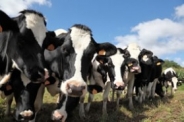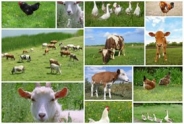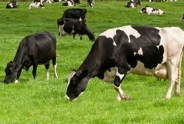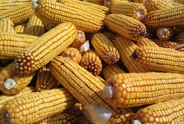It's always the Nutritionist's fault!
It's always the Nutritionist's fault!
by: Casey Havekes, Betsy Hicks, Margaret Quaassdorff
Cornell Cooperative Extension Regional Dairy Specialists
The role your nutritionist plays in the success of your dairy goes beyond the diet they put together. Ensuring good communication, having a basic understanding of your diet, and knowing what additives are incorporated and why they are added, can improve performance on your dairy. It is equally important to recognize that herd management also plays a critical role in success as nutrition alone will only take your herd so far. Because of this, CCE Dairy Specialists hosted a webinar titled, "It's Always the Nutritionist's Fault! Understanding diets and improving communication on your dairy". In case you missed the live webinar, below is a recap of the main points. You can also click here to watch the recording on YouTube.
Understanding Diets
It can be overwhelming when first presented with a diet summary. The nutrient acronyms, dry matter versus as-fed numbers, and the amount of information packed on the sheet can get the best of many dairy producers. Breaking down a diet summary into its main parts is the first step to understanding what the nutritionist has formulated to be put in front of your cows.
On the diet summary, one of the main areas to be spelled out is the description of the cow that the diet is formulated for. Breed, weight, body condition score, days in milk, milk production and milk components are all important factors that go into determining the requirements for that cow's diet. If some of these descriptors are incorrect, having a discussion with your nutritionist to better depict that cow can help you both to dial in to her requirements, which impact the nutrients the nutritionist will want to target.
After requirements are established, the diet summary should list those nutrient parameters, as well as as-fed and dry matter weights for forages and concentrates used in the diet. The main nutrient parameters that dairy producers can look at may vary between nutritionists and software used, but in general the list can include total Dry Matter of the diet (DM%), percent forage in the diet (% Forage), Crude protein (%CP), Rumen Degradable Protein (%RDP), Starch, Sugar, Digestible Fiber (%NDFDom), Fat (%fat or %EE), and mineral and vitamin levels. It is not important for the producer to know how to formulate a diet. Instead, it is important for the producer to understand how the main nutrient numbers may change when there is a diet change, or when comparing two diets for price or performance. Often in lactating diets, changes to the diet should keep certain nutrient parameters static through the diet change, if at all possible. These might include keeping percent fat in the diet the same, rumen degradable protein unchanged, or the addition of starch, sugar and digestible fiber the same even though those three nutrients themselves may differ from the previous diet. Each nutritionist may have a different thought process for moving through a diet change. Talking to him or her about their methods will help you both understand what is most important for each diet in your herd.
Overall, because nutritionists formulate on nutrients and not necessarily ingredients, the total diet nutrient balances for Metabolizable Energy (ME) and Metabolizable Protein (MP) can also be examined. A well balanced diet will show ME and MP levels about level and not over- or under-meeting requirements. Imbalanced levels of ME and MP mean a diet is either limiting response or wasting money. It is important to note that some companies may not tell you the exact ingredient formulation of their grain mix. However, they should be able to give you a diet summary and tell you main diet nutrient numbers, targeted requirements and dry matter intake, as well as any additives that are in the mix.
Lastly, the diet summary should have a portion that describes the cost of the diet alongside the total pounds of dry matter intake. Questions a producer should ask include: Does diet Dry Matter Intake (DMI) match actual Dry Matter Intake average of the group of cows? Does this diet cost include the cost of forages? If so, what are costs included at? Without knowing these numbers, it's almost impossible to accurately compare two diets side-by-side. If the numbers describing intake are incorrect, it's an opportunity to further work with your nutritionist to again dial in to a diet that describes what your cows are eating. If they are correct, you can work towards understanding your total Income Over Feed Costs (IOFC), a number that can be used to help compare the performance of two diets or when making a diet change.
Additives in the Diet
Feed additives function to correct a ration imbalance, magnify a productive or health response, as well as help mitigate underperforming management. Feed additives can play a variety of roles when incorporated into the diet including energy balance, calcium balance, immune function, rumen enhancement, reproduction efficiency, foot health, protein efficiency, and mycotoxin inhibition. Deciding which feed additives are worth incorporating into the diet is typically a decision guided by your nutritionist.
Regardless, it is important to understand what makes each additive a good choice. We can use "The Four 'R' Concept" from Mike Hutjens, Professor Emeritus at the University of Illinois, to help evaluate each additive. The first "R" is response; where you can identify the expected performance changes when the additive is included. Is it supposed to increase milk yield or components? Does it have a positive effect on dry matter intake, or more efficient rumen function or growth rates? What about overall animal health? The next "R" is return. The additive should have a clear and high benefit-to-cost ratio (>2:1). Some common additives with high benefit-to-cost ratios are anionic salts and similar products (10:1) that are used in DCAD diets to prevent milk fever; biotin (5:1) that promotes hoof integrity; monensin or rumensin (5:1) which improves feed efficiency; yeast culture and yeast (4:1) which has multiple rumen and immune benefits; and rumen protected choline (2:1) to minimize fatty liver in transition cows. In addition, are there other paybacks that are not easily monetized, but have a large proven positive effect (better herd health)? Speaking of proven effects, the third "R" stands for research. For best results only choose feed additives that have unbiased scientific research studies that back up their claims. Your nutritionist should be able to help you find information on this. The final "R" is results from your farms records. Do you see improvements in herd health, pregnancies, fresh cow performance, growth rates, or production performance? If not, check your records and start keeping track of the numbers so that you can make the best decision.
In addition to Hutjens', I would also add my own "R", right timing. Think about if an additive makes sense given the amount of cows it is going to, which groups it will benefit, and the time of year. Some additives, like those that aid in starch digestion may be best reserved for times when corn silage is freshly fermented. Certain mineral additives may show the most benefit when heat stress is challenging your cows. Overall, gather info about the product, and ask your nutritionist if you can have the research studies behind it. Work on a partial budget to see what you would have to do for the additive to make sense in the diet, identify the parameters you need to measure to know that it is working...and keep track.
Management & Nutrition
There is a popular saying in the dairy nutrition industry and it goes "there are 4 types of diets on the farm: the one the nutritionist formulates, the one that is mixed, the one that is delivered, and the one that the cows actually eat". Of course, there will be day-to-day variation in which the diet that is prepared, mixed, and fed deviates from the prepared batch sheet that your nutritionist sent you - and that is okay! If, however, the prepared diet deviates largely from your formulated diet some consideration is warranted. Particularly, it is important to ask yourself why you are deviating so much. Perhaps you are out of a certain feed ingredient, or you switched grass cuttings or bunks. Maybe you noticed a change in dry matter, or you noticed a change in the cow's manure, or that butterfat is down. Whatever the reason may be, and however simple the reason may be, it is important that your nutritionist is aware of the change so that they can make record of it and make any necessary changes.
Additionally, there are several management points that should be regularly communicated with your nutritionist. Some of these include: mixing issues, grain flow issues, odd cow behaviors, abnormal refusal rates (very high or no refusals), undesired feeding behaviors (sorting), cow/pen numbers, manure consistency, and metabolic issues. It is important to remember that your nutritionist wants to make the best and most affordable ration for you and your cows, but nutrition can only take the herd so far and there is a very large role that management plays in the herd's success.
Relationship between Nutritionist & Producer
The relationship between the producer and the nutritionist can make or break the herds productivity. One strategy to maximize success of this working relationship is to make sure that both parties are on the same page, and to make sure that goals are measurable and achievable. Undoubtably, it can be frustrating to ask for or suggest a change, only to revisit the topic a couple of weeks or months down the road and find that nothing has changed. If you find this is a regular occurrence, it may be worthwhile for you to evaluate the reason behind it. Perhaps your goals and your nutritionist's goals aren't lining up, or the goal is unrealistic. Having these conversations, albeit uncomfortable, are crucial for maximizing success. One tip when setting goals is to set a timeline, and track progress. Improvements take time, and may require management and nutrition changes, so be sure to be patient and allow your timeline to reflect this. The second thing you should do is monitor progress. Keep reports of significant management and nutrition related changes so that you can go back several months down the road and pick up any trends in cow performance.
Another important piece of the puzzle is to create solutions together. A video created by Daniel Scothorn recently highlighted the fact that as a producer, you are the one around your cows every day thus your perception of any issues or challenges is extremely valuable. If you are experiencing production or metabolic issues that you feel may be related to nutrition, it is important that you communicate not only that you are seeing an issue, but also what you are seeing (i.e. sorting, loose manure, loss of body condition etc.,). Just remember, your nutritionist is not there every single day and even when they are there, they very likely aren't seeing everything you see day-to-day. Investing in your own part of your herd's nutrition is a critical component of success - both the cow's success, and the success of your relationship with your nutritionist!
In summary, if you want to take your herd performance to the next level, start by ensuring your goals align with those of your nutritionist. This includes seeking out a better understanding of your diet, and the role of any included additives. Lastly, herd management and the way the diet is fed will have a direct impact on performance, which highlights the importance of your role in your farm's success.
Upcoming Events
Western NY Value-Added Dairy Discussion Group: Jess May- Farm Credit East Webinar
May 2, 2024 : Value-Added Dairy Discussion Group Webinar: Jess May- Farm Credit East
Register here:
https://cornell.zoom.us/webina...
Western NY Value-Added Dairy Discussion Group: Eden Valley Creamery
May 3, 2024
South Dayton, NY
Registration for this discussion group is required and limited.
Western NY Value-Added Dairy Discussion Group: Shtayburne Farm Creamery
May 16, 2024
Rock Stream, NY
Registration for this discussion group is required and limited.





